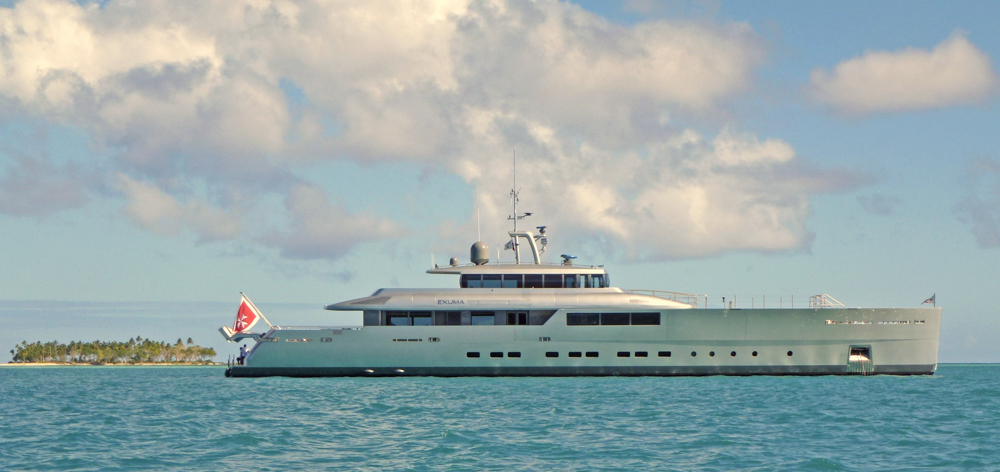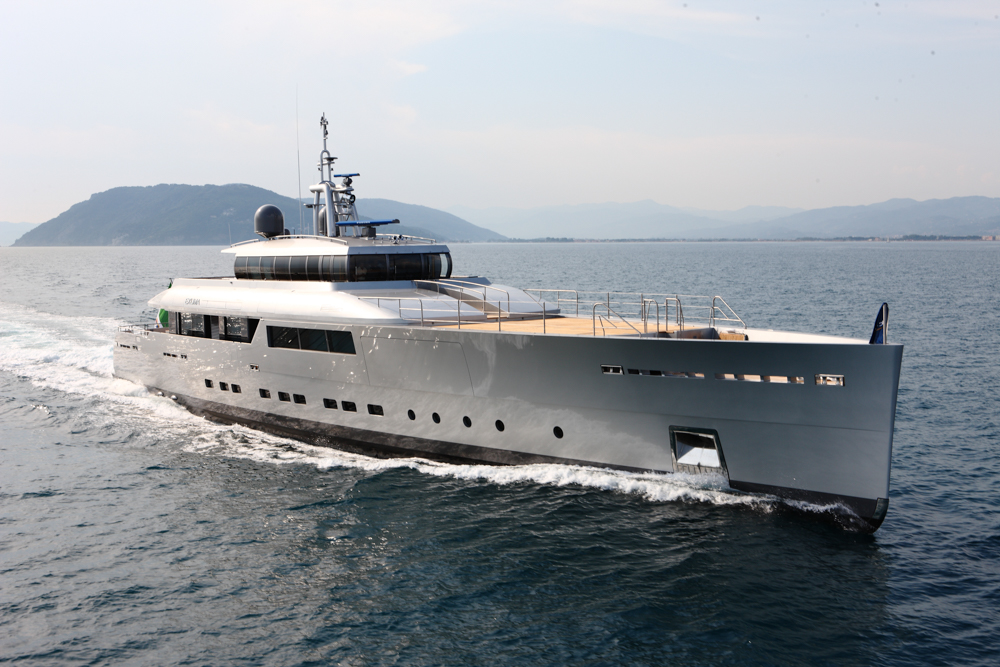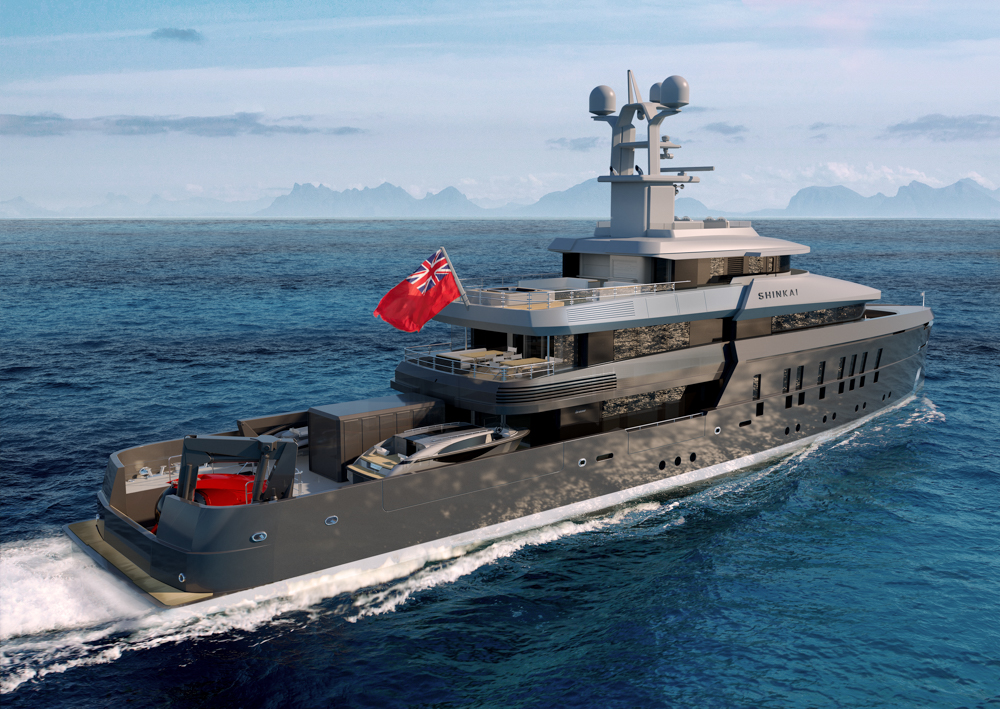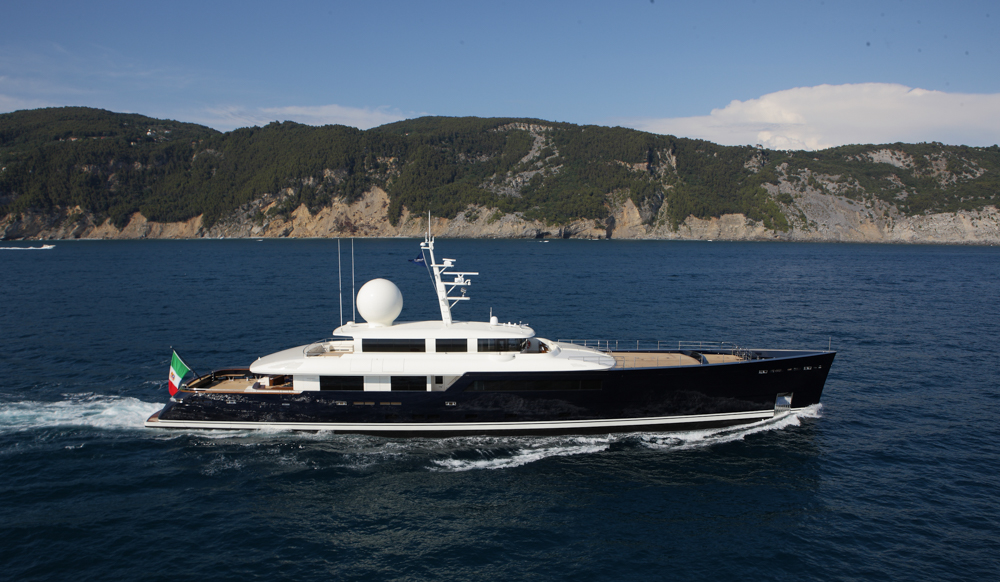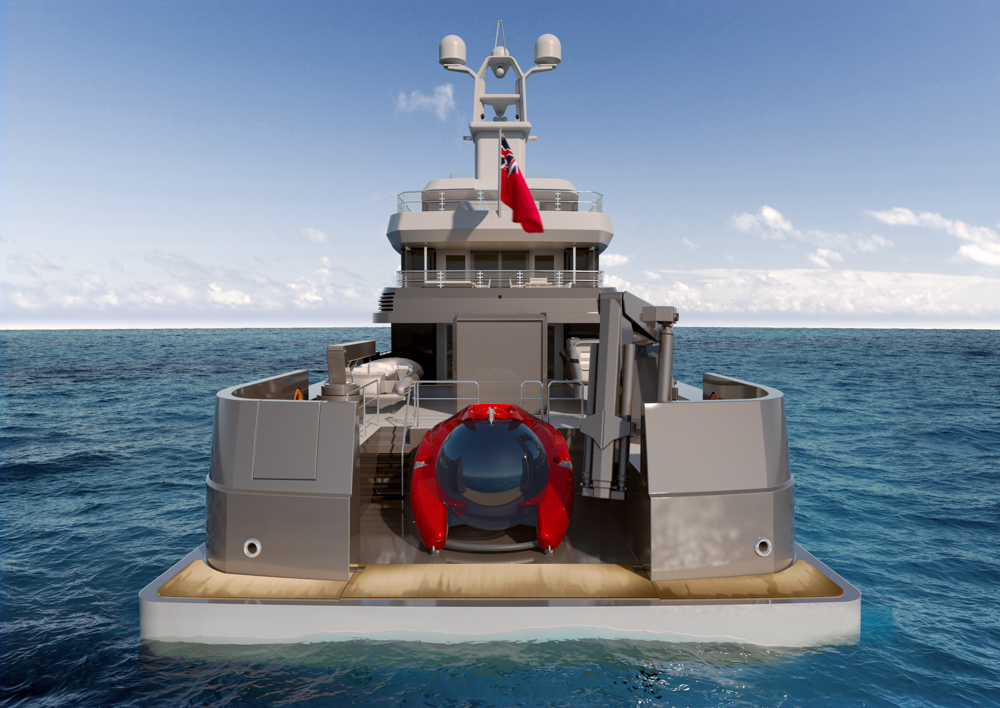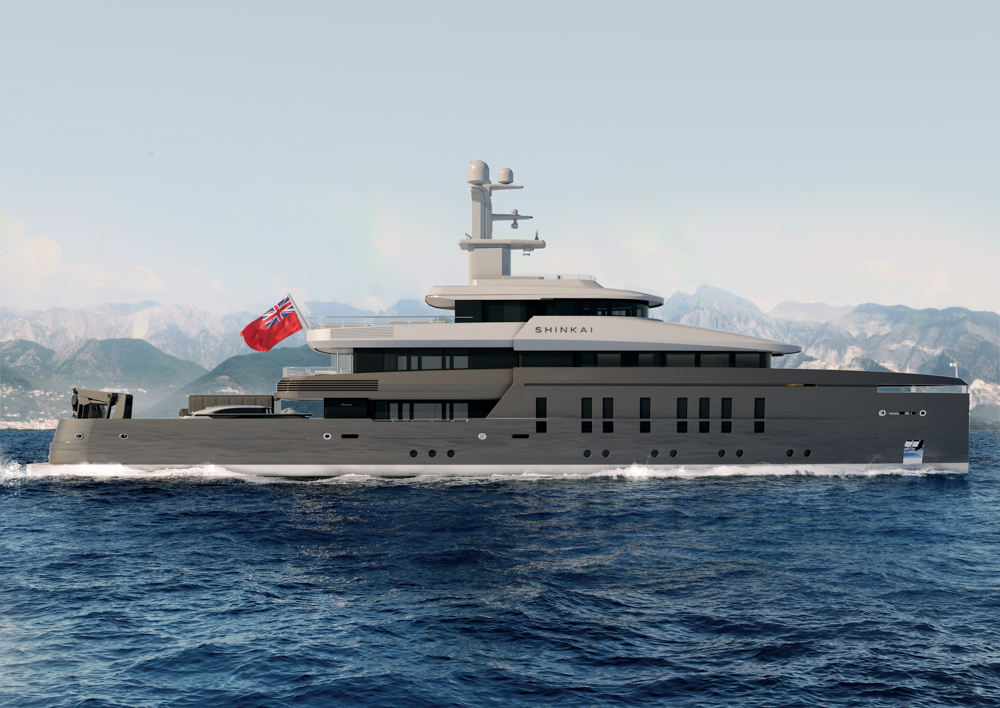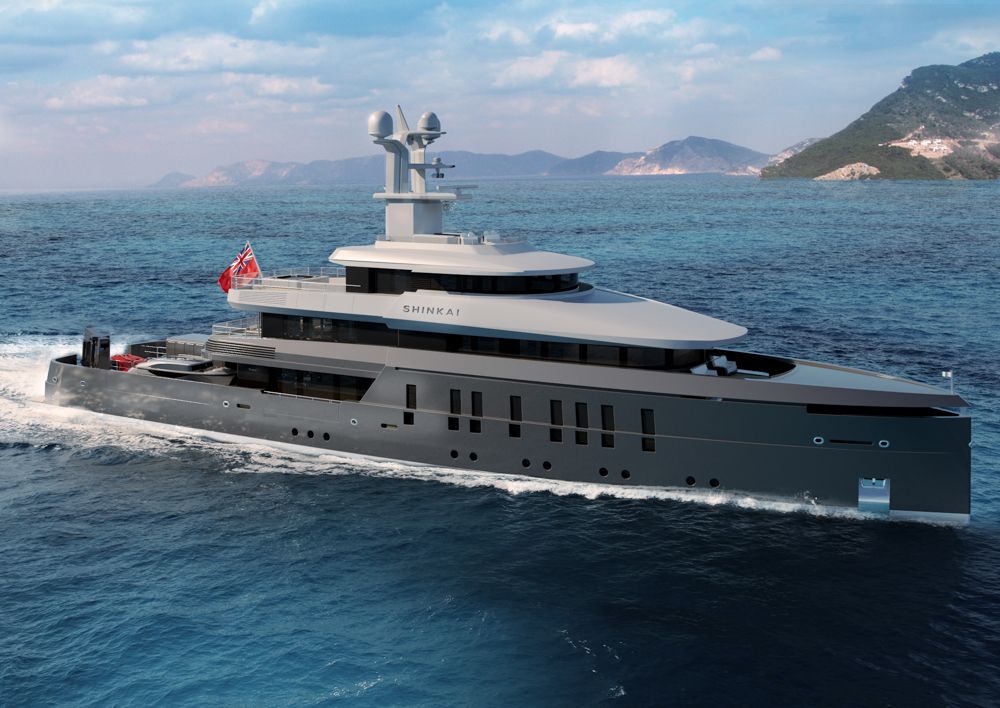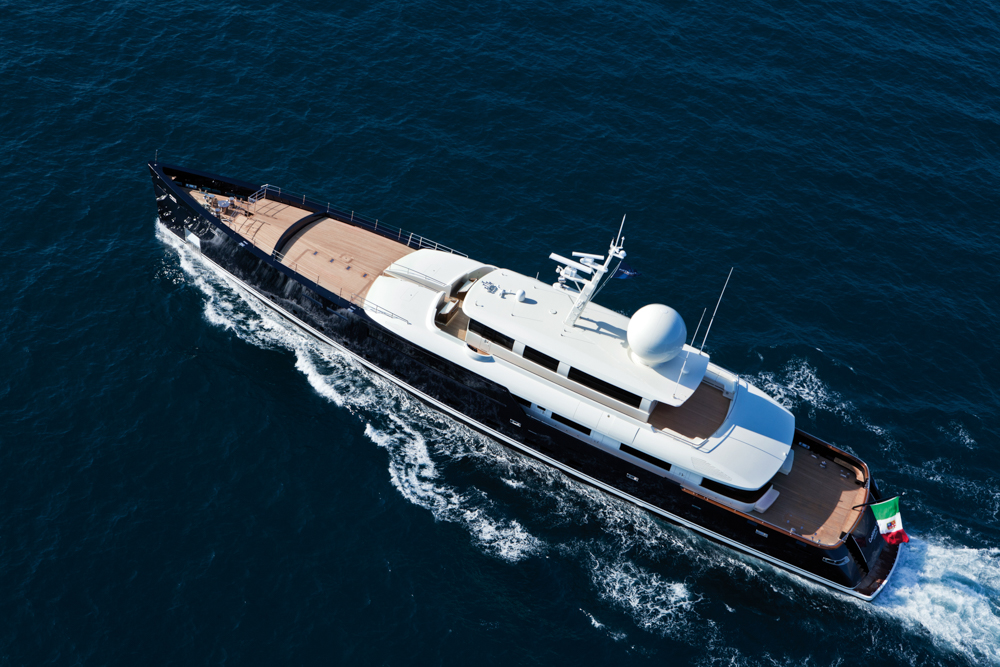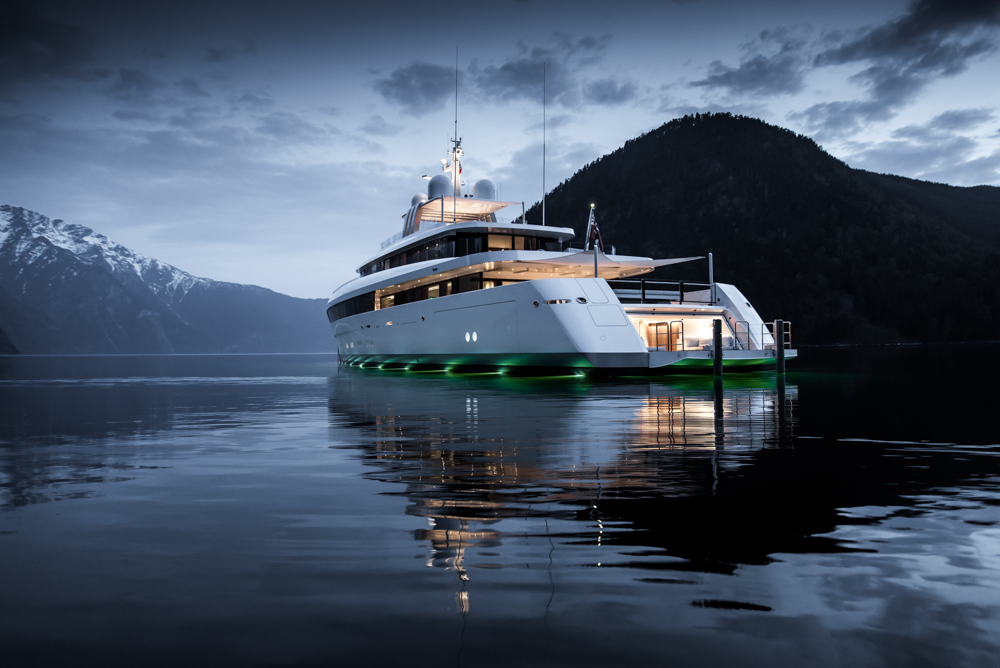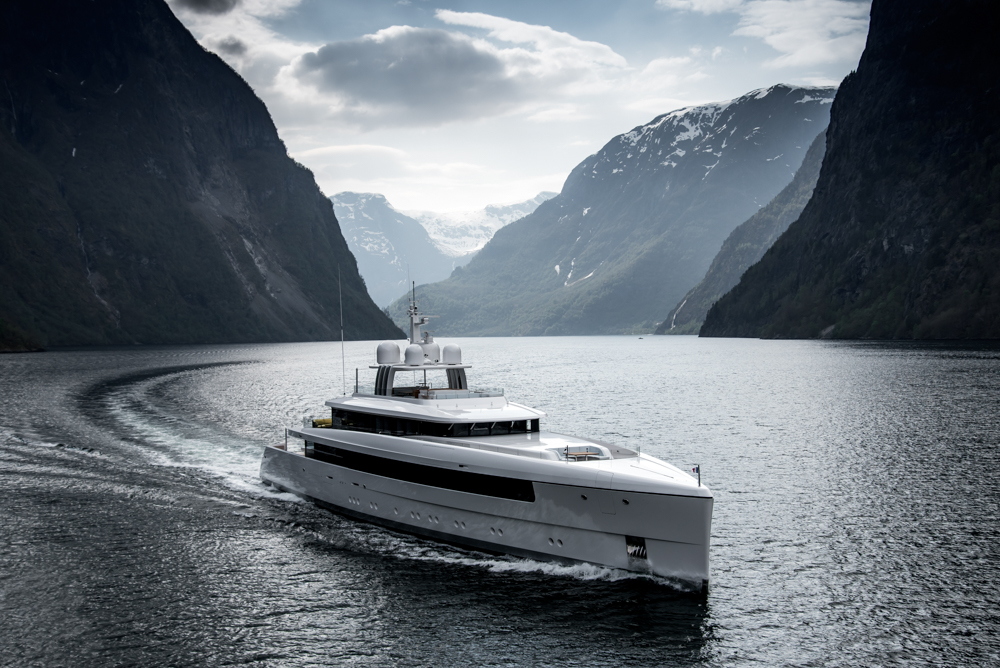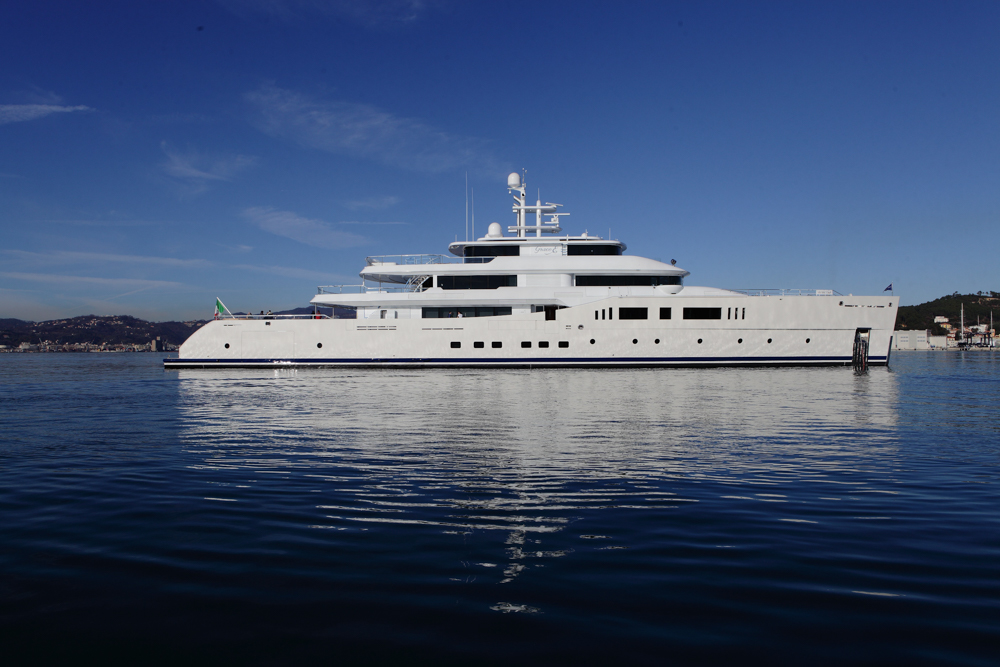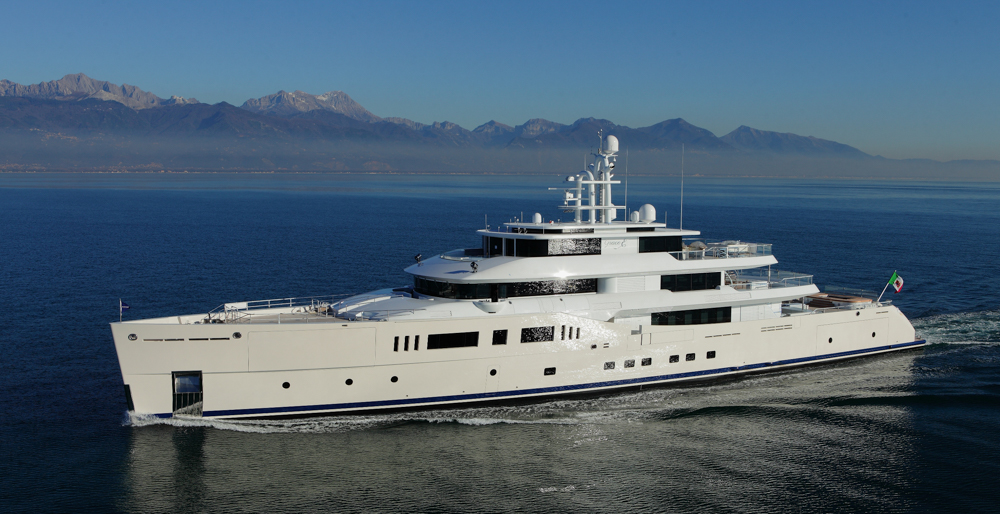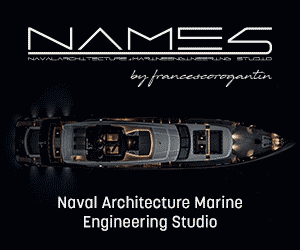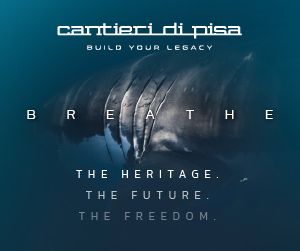Explorer and expedition yachts: the new frontier in luxury superyachts
Philippe Briand, founder of Vitruvius Yachts, analyses the transformations in luxury yachts
Philippe Briand, founder of Vitruvius Yachts, analyses the transformations in luxury yachts
Luxury yachts are changing. The market is seeing more and more models created for adventure, for a new generation of owners. Philippe Briand, naval architect, and founder of the design studio, Vitruvius Yachts, analyses this transformation based on his decades of experience in nautical design.
EXPLORER AND EXPEDITION YACHTS: “A GROWING SECTOR”
“The sector for explorer and expedition yachts – notes Briand – has undergone double-digit growth since 2008 and currently represents approximately 10% of the entire market for superyachts, a number that is not so far from sailing yachts of the same size. Therefore, I believe that it is not an exaggeration to say that clients who in the past would have bought a sailing yacht, are now turning their interest to this type of luxury vessel, because, just like sailing, they are ideal for long trips and can bring them close to nature.”
A transformation that, according to the architect, has already affected similar industries, like, for example, the automotive industry. “In the luxury automobile sector – explains Briand – there are approximately ten different product categories buyers can choose from: from sporty Ferraris to sumptuous Bentleys and robust 4×4 Range Rovers, with intermediary categories like SUVs. Dividing the market into these niches, the automotive industry can more precisely identify their clients. And this is what we want to do in the boating industry.” Which translates, for the London-based studio, into identifying and classifying three main groups of superyachts – lifestyle yachts, expedition yachts and explorer yachts, this last positioned in between the other two.
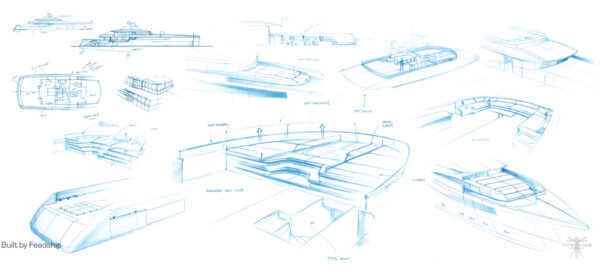
Designs for the lifestyle yacht, Najiba by Vitruvius Yachts
LIFESTYLE YACHTS, THE LARGEST CATEGORY
Lifestyle yachts belong to the largest category: this covers 90% of the market and is targeted to owners who prefer enjoying a cruise in the Mediterranean or the Caribbean. This group includes the 58 metre Vitruvius Najiba and the 73 metre Nautilus (formerly Grace E), vessels in which there is ample open space and the interior is designed with a continuous flow thanks to the large windows.
A relationship with nature is curated and mediated through balconies along the waterline or large transparent windows. “We are pushing owners and passengers – says Briand – to feel closely tied to the sea, rather than being isolated in extremely high superstructures. But to be truly revolutionary in this category, it is important to improve efficiency and design an onboard lifestyle in line with that of younger and open owners.”
Although the Mediterranean and Caribbean are, even according to Briand, the best option for cruising, the other oceans can bring excitement. “Today’s yachts – reveals the architect – visit only 3% of the coasts along the planet, there is still so much to discover and experiment. This can become attractive both for experienced owners, who have already explored the Mediterranean and Caribbean, and new arrivals, who are respectful, curious and appreciate the world’s natural marvels. With the technology and the design tools available to us, we can offer the experiences these owners desire, while the yacht can still be environmentally sustainable.”
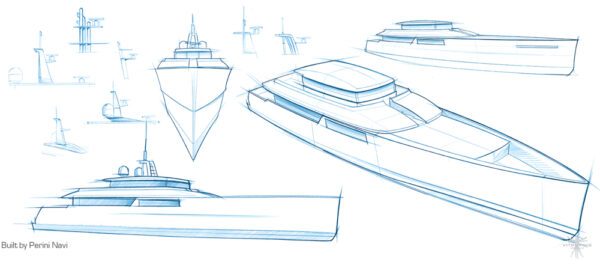
Designs for the explorer yacht, Exuma by Vitruvius Yachts
MORE EFFICIENCY, FEWER EMISSIONS
Ecology seems to be the key word in the development of future projects, and not just for the studio based in London, and its French branch in La Rochelle. “New clients – notes Philippe Briand – want to reduce the impact of boating on the environment, choosing vessels that have better efficiency and fewer emissions. The biggest influence that us designers can have on the sustainability of a yacht, begins with our approach to naval architecture, developing an efficient hull, supported by technologically advanced propulsion systems.”
The designer remembers that thanks to the Water Revolution Foundation – an international independent non-profit organisation promoted by the superyacht industry to neutralise its impact on the marine environment – the boating industry is making progress in this field. “Another new tool, the Yacht Environmental Transparency Index (which will be presented this spring by the Foundation, editor’s note), will allow us – explains Briand – to identify and receive more precise information to what creates a more ecologically responsible yacht.”
EXPLORER YACHTS, FUNCTIONALITY AND AUTONOMY
Explorer yachts, called upon to sail in more remote waters compared to lifestyle yachts, require more functionality, without forgetting the need for higher autonomy. “Our job as boat designers – notes Briand – is to achieve and refine these details,” starting with hydrodynamics and engineering in order to also cover needs for cargo, seeing as the yacht could also carry large specialised equipment, like for example submarines or amphibious vehicles.
The 45 metre Exuma and the 55 metre Galileo G are explorers. The first one, launched in 2010, certainly completely changed this type of vessel. “Everything it was before – remembers the designer – was more similar to a fishing boat”, meaning a longer autonomy with a contained size which was not conducive to high level of comfort.
“Our solution – adds Briand – encourages the desire to sail as much as possible. Since its delivery, Exuma has sailed over a hundred thousand nautical miles, equivalent to twice around the globe. It is a really exceptional result for a pleasure yacht.” A result which was achieved through a series of innovations, both technical, like, for example the drop bow, and in layout, guaranteeing comfort and functionality, while drastically reducing tonnage.
EXPEDITION YACHTS, A FIELD OF SPECIALISATION
The difference between explorer and expedition yachts lies in the objective the owner wishes to achieve. The second is created and built with quality and bespoke capabilities for a determined job. Which then translates into specialised equipment, support and crew. In this case, according to Briand, “the destination is more important than the sailing itself.” A design approach that centres around the owner’s specialisation, no different from that undertaken for a research vessel, but with a much higher level of comfort and attention to detail.
An example is Vitruvius Yachts No. 8, equipped by the owner with a three-person submarine of over six tonnes (moved by an even heavier articulated crane), a Toyota land Cruiser and two tenders, one of which is eight metres long.
All of this without losing space in its 55 metres of length, for a super luxury quality of habitability in the interiors, which include and owner’s suite, four cabins and quarters for 15 crew members. “A challenge without precedence”, concludes Philippe Briand, which we resolved by introducing a fourth deck to the bow, so as to expand the surface area and obtain the best performance, both as an expedition and lifestyle yacht.
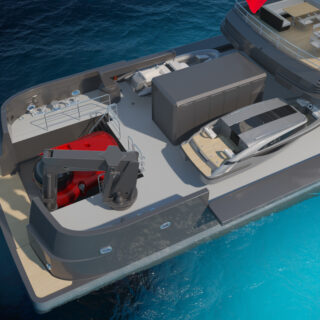
The garage of expedition yacht No. 8 by Vitruvius Yachts



